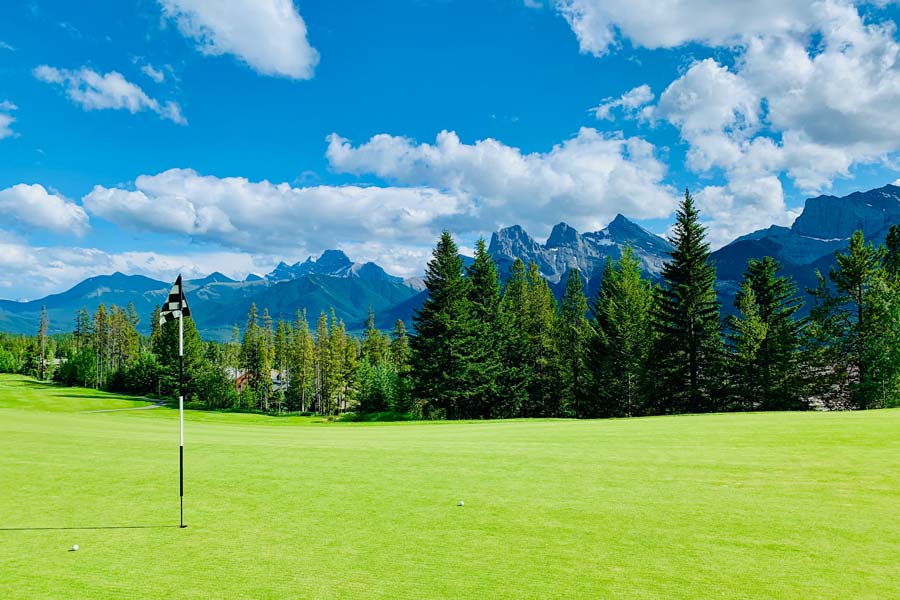What are the parts of a golf course?
Knowing the parts of a golf course will help you get started in the world of golf, as well as provide you with knowledge to improve your gameplay.
You will discover that there are areas where it is more difficult to hit the ball than others, and that it is more comfortable to play when you know the course and its parts compared to playing on a strange course. Knowing how to identify the parts of a golf course will help you feel more familiar with it. Let’s go!
Parts of a golf course
Tee
To start by showing you the parts of a golf course, we will introduce the tee. The tee is the part of a golf course where the first shot of each hole is taken. This is not the same spot for all golfers, as it depends on the category, gender, and age. Additionally, we also refer to the tee as the tee box, which is the elevated area from which the player takes the first shot.
Green
We have seen the first part of the golf course, now let’s talk about the green, which is the final part of these courses. It is the area where we can find the hole and the flag, which indicates the location of the hole.
This part of the golf course is the most delicate of all, and players have an obligation to repair ball marks, as well as avoid dragging their feet. This is because the grass height is only between 2.5mm and 4mm. It is also mandatory to hit the ball with a golf club called a putter.
One easy way to identify where this area begins is by the strip surrounding the green, which is called the fringe. It has higher grass height than the green, but shorter than the fairway, which we will see next.
Great, now we know the head and feet of a golf course, let’s see what’s in between.

Fairways
Continuing with the parts of a golf course, we have the fairways, which correspond to the area between the tee and the green. The length and angle of the fairways depend on the hole’s par or the design of the course itself. For example, for a par 3, the fairway is small, and in some holes, it may not exist. On the other hand, for a par 4, the fairway is somewhat more extensive, but still calculated for only one shot to reach the green. And for par 5 holes, two shots are needed due to their greater length and/or angle.
Additionally, this part of the golf course is specially designed to make shots much easier, as this area has well-maintained and closely cut grass.
Hazards
As the name suggests, the parts of a golf course called hazards are the areas that add difficulty to the golf course. What types of hazards can we find? There are water hazards and sand hazards, which are known as bunkers.
Water hazards can be identified by the red or yellow stakes that surround them. Bunkers, on the other hand, are sandy areas that are usually located near the landing position of the ball after the first shot or near the green.
Rough
The rough refers to the areas that border outside the fairway and where the grass is higher. For this reason, it becomes much more difficult to hit from this area, and therefore, golfers should avoid it.
Just like with the green area, where there is a fringe, we can find a collar, which has grass height that is in between the fairway and the rough. You should know that it is still challenging to hit from the collar.
As you have seen, the parts of a golf course are very easy to identify. If you still have little experience, it will be very helpful for you to try our practice range to get off to a good start in the world of golf.

